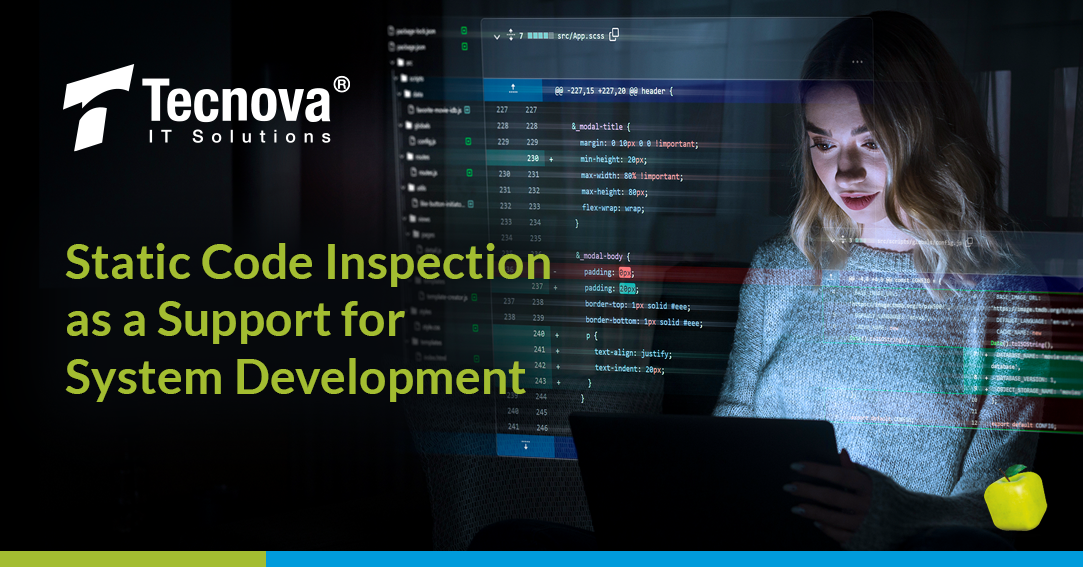Static Code Inspection as a Support for System Development

The quality of the code we produce is an integral component for the successful development of systems. This is where static code inspection plays a crucial role, as it enables a meticulous and systematic review to identify potential flaws during the early stages of development. As IT managers, it’s imperative to understand how this tool can enhance efficiency and quality in our projects.
What is Static Code Inspection?
Static code inspection is a process that reviews the source code of a program for possible errors, bugs, security vulnerabilities, and other issues, without the need to run the program. This process is key as it allows for the detection of flaws in the early stages of the development cycle, saving valuable time and resources.

Benefits of Static Code Inspection
Static code inspection offers a considerable set of advantages that add value to any software development process.
Improves Code Quality
Static inspection tools allow for the identification and correction of issues before the code reaches the testing or production phase. This elevates the quality of the produced code and decreases the likelihood of encountering errors in later stages.
Enhances Team Efficiency
The ability to detect and solve errors early significantly reduces the time devoted to bug fixing during testing and post-production. This, in turn, increases the development team’s efficiency and allows for a focus on creating new features.
Increases Security
Static inspection tools are effective in detecting security vulnerabilities in the code, providing an additional layer of protection to our systems and contributing to the mitigation of potential attacks.
Static Code Inspection Tools
There are several static code inspection tools in the market. Some of the most used include:
- SonarQube: Provides detailed reports of code issues and integrates with a wide range of languages and development environments.
- Coverity: Specialized in identifying security vulnerabilities, it is widely used in projects that require high security standards.
- Checkmarx: It’s a powerful and flexible tool that integrates well with agile methodologies and DevOps.
- Veracode: Offers a complete range of security tests, including static and dynamic analysis.
Implementing Static Code Inspection
To achieve maximum performance from static code inspection, correct implementation is crucial:
- Integration with Software Development Lifecycle: Static code inspection should be an integral part of the development process, incorporated at every stage, from design to production.
- Choosing the Right Tool: Each static code inspection tool has its pros and cons. It is essential to select the one that best suits our needs and those of our team.
- Continuous Training: It’s vital to provide continuous training to our team to ensure effective use of these tools.
Conclusion
Static code inspection is a powerful tool for improving the quality and security of our systems. As IT managers, we must understand its importance and how to correctly implement it to reap its benefits to the fullest.
If you’re considering implementing static code inspection in your organization, at Tecnova, we’re ready to help. As an ISQTB Silver Partner, we have the necessary experience and knowledge to support you in conducting a proof of concept in your company. Feel free to contact us to discuss how we can collaborate in your software quality improvement process.








